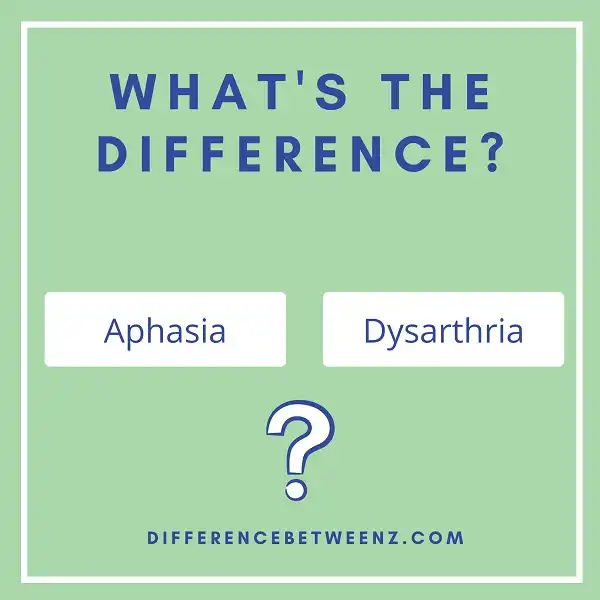Aphasia and dysarthria are two neurological disorders that can impact a person’s ability to communicate. Although they both affect communication, they are two distinct disorders. Aphasia is a disorder that affects language comprehension and production, while dysarthria is a disorder that affects the muscle tone and movement of the speech muscles. This post will explore the difference between these two disorders.
What is Aphasia?
Aphasia is a communication disorder that can result from damage to the language areas of the brain. A person with aphasia may have difficulty producing or understanding speech. Aphasia can also affect a person’s ability to read and write. Aphasia does not affect a person’s intelligence, and most people with aphasia retain the ability to use nonverbal types of communication, such as gestures and facial expressions.
Aphasia can occur in people of any age, but it is most common in older adults who have had a stroke or other brain injury. Aphasia can range from mild to severe, and it can have a significant impact on a person’s quality of life. There is no cure for aphasia, but there are treatments that can help improve communication skills. With treatment and support, many people with aphasia live fulfilling and productive lives.
What is Dysarthria?
Dysarthria is a motor speech disorder that can cause difficulty speaking. Dysarthria can be caused by many things, including neurological disorders, stroke, head injury, and even certain medications. Dysarthria can make it difficult to speak clearly and may cause slurred or slow speech. Dysarthria can also affect facial expressions and the ability to swallow. Dysarthria is treated by speech therapy, which can help improve muscle control and speech clarity. There is no cure for dysarthria, but treatment can help people with the disorder manage their symptoms.
Difference between Aphasia and Dysarthria
Aphasia and dysarthria are two communication disorders that can occur after a brain injury. Aphasia is a disorder that impairs a person’s ability to understand or express language, while dysarthria is a motor speech disorder that affects the muscles used for speaking. Both disorders can make it difficult for a person to communicate effectively. Aphasia can cause problems with understanding spoken or written language, or with producing spoken or written language.
Dysarthria can cause problems with the muscles used for speaking, making it difficult to produce clear speech. A person with aphasia may be able to speak fluently but be unable to understand what others are saying. A person with dysarthria may be able to understand spoken language but have difficulty producing speech that is clear and easy to understand. Aphasia and dysarthria can both affect a person’s ability to communicate effectively, but they are different disorders.
Conclusion
Aphasia and dysarthria are two neurological conditions that can affect a person’s ability to communicate. While they share some similarities, there are some key differences between the two. If you are having trouble communicating with someone who has either of these conditions, it is important to understand what type of communication difficulty they are experiencing. With a little bit of knowledge and understanding, you can help make communication easier for both you and the person you are speaking with.


